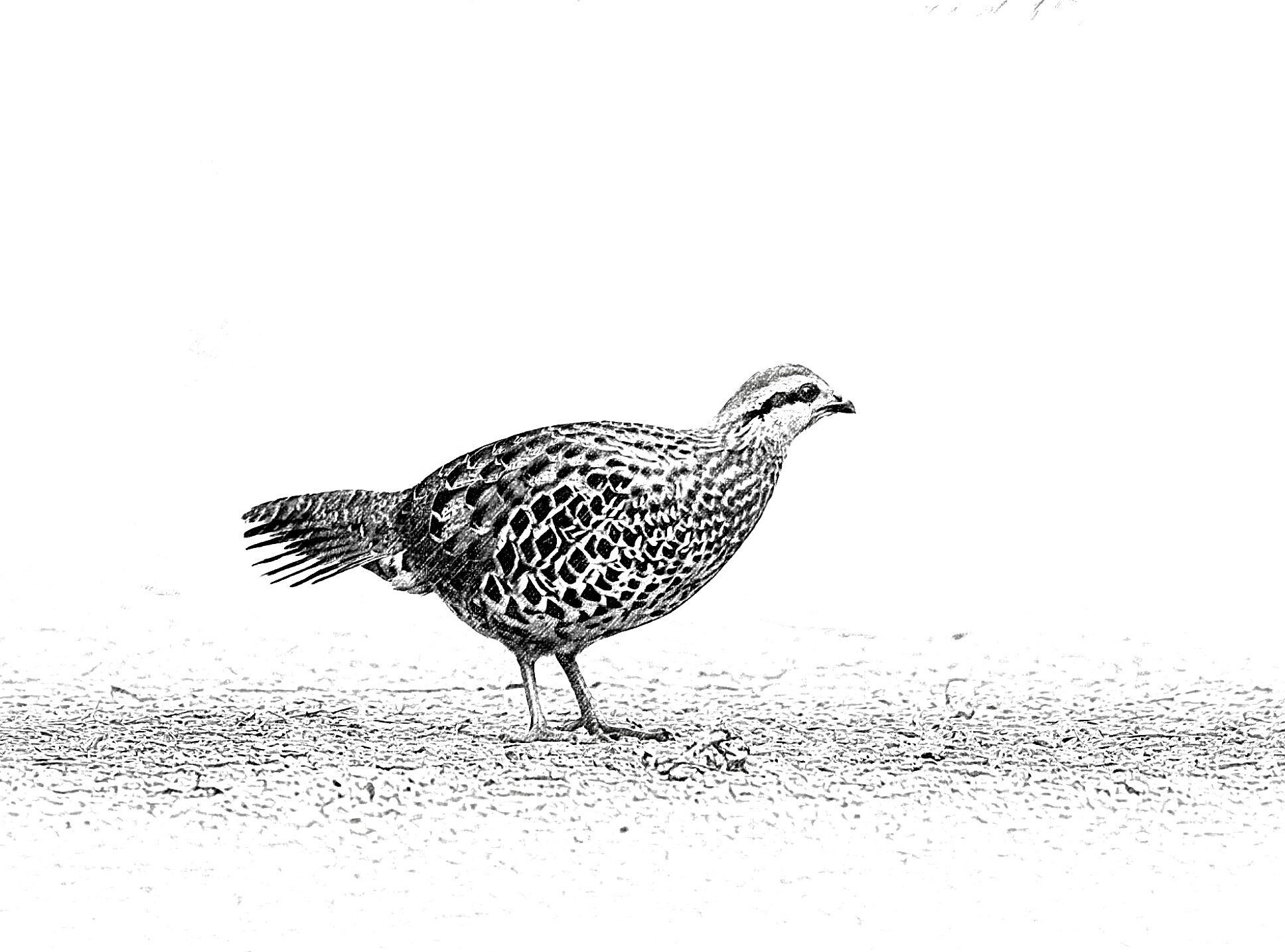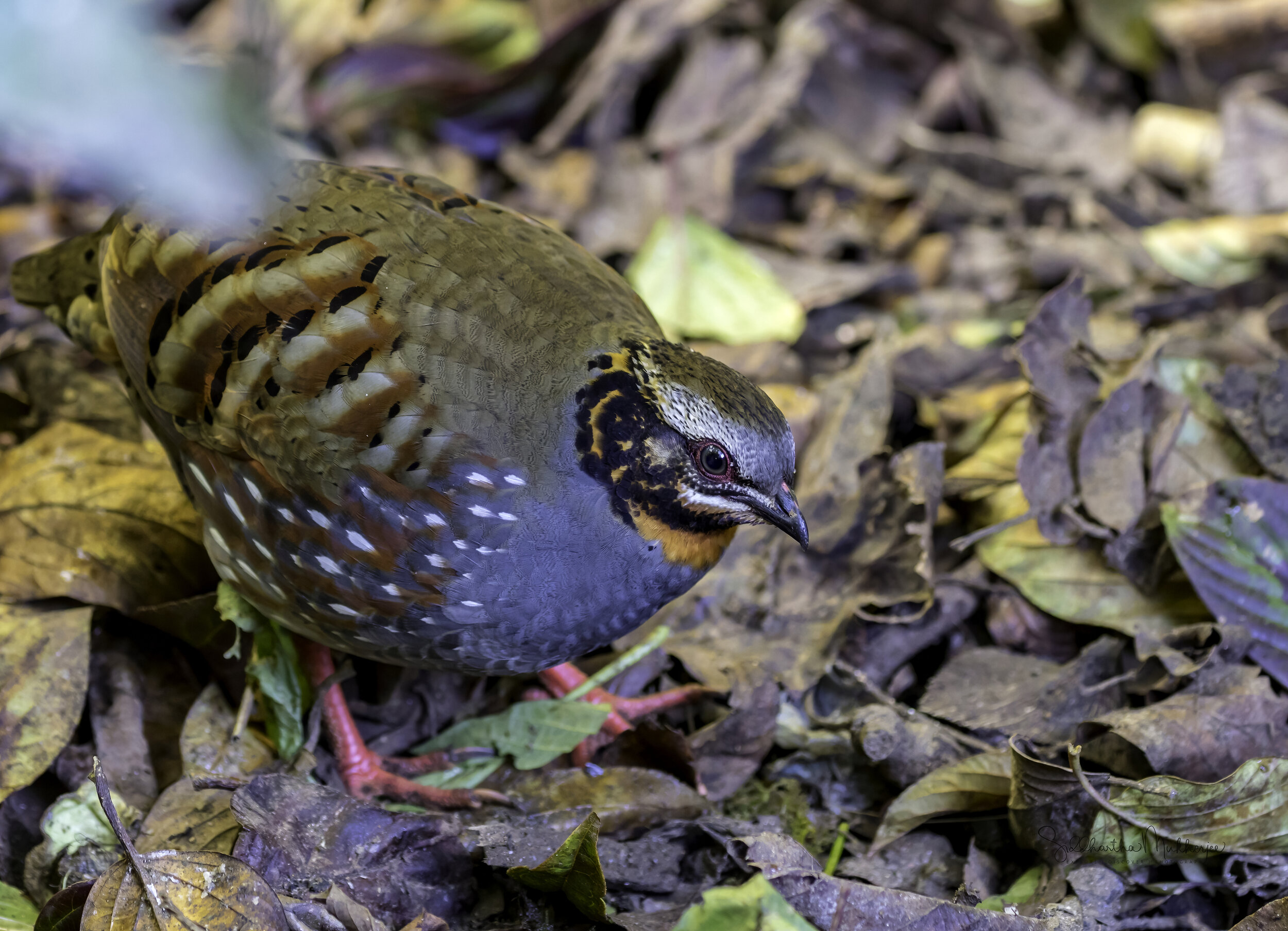Mountain Bamboo Partridge
Bambusicola fytchii
Doi Pha Hom Pok National Park, Chiang Mai, Thailand
After the little cruise in the emerald waters of Langkawi we return again to the dois of north Thailand but this time to Doi Ang Khang to search for a reclusive and shy partridge. To read about the earlier birds of the Dois click the links below:
About 685 kilometers to the north of Bangkok lies the former seat of the ancient Lanna Kingdom & is considered one of the most scenic provinces in the country given its mountain ranges, valleys, flora and fauna. A land of misty mountains and colourful hill tribes, a playground for seasoned travellers, and a delight for adventurers. Despite its relatively small size and blissful calm, Chiang Mai truly has it all, a city that is still firmly Thai in its atmosphere and attitude. It is the second-largest changwat (province) of Thailand. Bordered by Chiang Rai to the northeast, Lampang and Lamphun to the south, Tak to the southwest, Mae Hong Son to the west and the Shan State of Myanmar to the north. Located in a verdant valley on the banks of the Ping River, Chiang Mai was founded in 1296 as the capital of the ancient Lanna Kingdom. Today it is a place where past and the present seamlessly merge with modern buildings standing side by side with venerable temples. Of all the places I have visited in Thailand, Chiang Mai with its forests and mountains and the historic city of Ayutthaya are by far my favourites.
The word Chiang itself is from North Thai, or Lanna, meaning town or city and Mai means new making Chiang Mai the New City as it was founded later than Chiang Rai, the earlier capital of King Meng Rai. The districts in the province are called amphoe, and sub-districts are called tambon. Another twist is the use of Nakhon (or Nakorn or Nakhorn), derived from the Sanskrit word Nagara, also means city, though strictly speaking it refers to a capital city such as Nakorn Sri Ayutthaya (more on Ayutthaya later). Indeed to emphasise its former status you may sometimes see Chiang Mai referred to as Nakhon Ping. Other common names of geographical features include mae (river) and doi which is north Thai for mountain - for example Doi Inthanon and Mae Ping.
The four Dois we spent our time on were Doi Inthanon, Doi Ang Khang, Doi Luang and Doi SanJu.
Doi Ankhang is a mountain belonging to the Himalayan foot hill range, located at the Myanmar (Burmese) border. The highest point is 1,928 metres. Although chiefly deforested, this is still one of Northern Thailand’s most prominent birdwatching areas, due to more and rarer bird species being in residence, as well as being a popular resting point for numerous migratory birds. Examples of rare and beautiful birds inhabiting this area include the Spot-breasted Parrotbill and the Red-faced Liocichla. A highly recommend site to find the rarest bird species is the picturesque area named Heavenly Valley. It is not so uncommon to spot the Red-tailed Laughing Thrush here. Around The Royal Agricultural Project Station you can find Brown, Burmese and Long-tailed Shrike and also Fire-capped Tits and Silver-eared Mesia, White – tailed Robin & Maroon Oriole.
We didn’t have the good fortune to see all the species on all the mountains, that would have been impossible, but we did rack up quite a number of species - about 95 of them. The gallery today is of the shy and reclusive Mountain Bamboo Partridge.
‡‡‡‡‡
For a print of the beautiful birds from the Dois click on the button below to read my process and order a limited edition canvas.
‡‡‡‡‡
One of my photos of the Mountain Bamboo Partridge was also painted by the renowned Macedonian painter Simonida Filipova Kitanovska, a professional painter from Skopje, North Macedonia. She has exhibited her watercolours including the ones of my birds at various locations around the globe. To view her watercolours of my birds click on the button below.
‡‡‡‡‡
Mountain Bamboo Partridge
The mountain bamboo partridge (Bambusicola fytchii) is a species of bird in the family Phasianidae found in Bangladesh, Tibet, India, Laos, Myanmar, Thailand, and Vietnam. In India, these birds are found in the mountains of Arunachal Pradesh, Meghalaya and Mizoram. The International Union for Conservation of Nature (IUCN) has categorised this species as "Least Concern".
These birds are small in size, measuring 25 to 30 cm in length and weighing 250 to 400 grams. The male birds are larger than the females. The feathers of the birds feature a mix of brown, cream and grey colour. Their breast and abdomen is pale with brown speckles. The Mountain Bamboo Partridges have distinctive black and white eye stripes.
Their plumage is a mix of browns, cream and grey. They have distinctive black and white eye stripes and their breast and abdomen is pale with brown speckles.
They prefer to live close to water in bamboo scrub forest, open scrub forest, thickets, and mixed scrub and tall grassland along watercourses. They remain under shrub cover for much of the day, moving into the open in the early morning and late evening to feed. They will only fly when threatened, returning to cover quickly. The bird is fairly common throughout its range but the population trend appears to be decreasing.
Breeding occurs in the summer months between March and September. The nest is a simple scraped out dip in the ground lined with grass. The female incubates the eggs for 18 to 19 days. The male meanwhile stays close to the nest and feeds the female and, once hatched, the chicks.
The diet of the mountain bamboo partridge is primarily bamboo but also includes a wide variety of seeds, berries, shoots and invertebrates.
The mountain bamboo partridge is fairly common throughout its range. However, population numbers do appear to be declining. Areas of the bamboo partridges' habitat is cleared for agriculture but they have been seen living on the cultivated land. There is some evidence of hunting in parts of their range.
On Doi Ankhang, when we started, there was. a fair bit of fog. As the rules in Thailand dictate we were in our hides hoping the fog would lift. The first time the birds came out they were very difficult to spot leave along photograph. We were expecting them to come out on our right but they came out on the left. They started to come out on to the path but there was a slight noise and they very quickly disappeared back in to the brush. Then when they came back out the fog had started to lift and this time they came out as predicted on our right. The following photo gallery is from that beautiful morning on Doi Ankhang.
‡‡‡‡‡
Related Posts

















